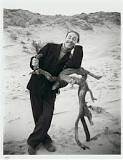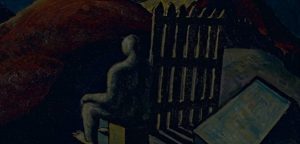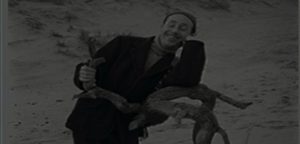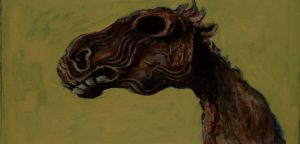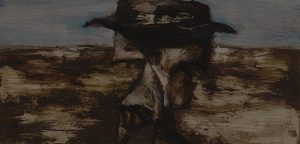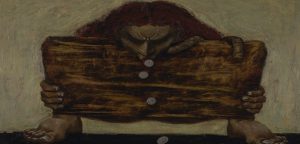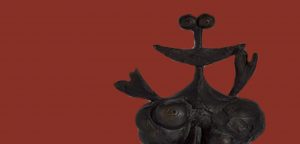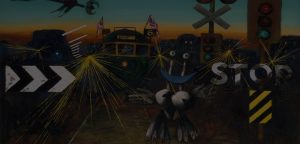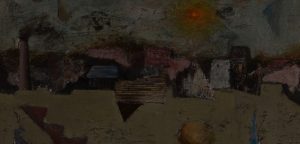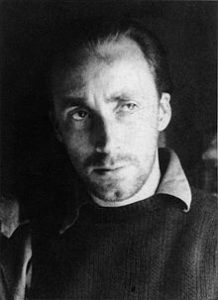Albert Tucker was born on the 24th of December in 1914 in Melbourne, Australia.
1914 - 1999
Albert Tucker
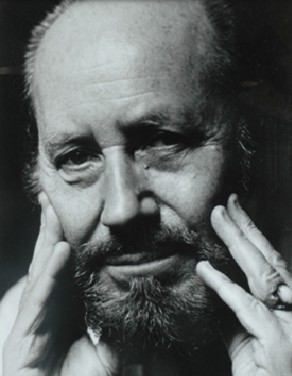
description
An Australian avant-garde artist and sculptor, who worked for some time in Europe and America.
Albert was born in the Australian city of Melbourne into the poor family of a railway worker. He had to leave school at the age of 14 to help his family. Not having formal artistic training, he got a job as a cartoonist and commercial illustrator at an advertising agency.
He was a member of “Hyde Krug” – a group of progressive artists and writers, a member of the Society for Contemporary Art of Australia, created in 1938 by J. Bell as an alternative to the Academy of Arts. He became one of the organizers of “Angry Penguins” (“Evil Penguins”), the avant-garde movement of the 1940s and the co-author of the issues of the eponymous magazine.
Tucker often took pictures, using them to create paintings, and also wrote down ideas and scenes that were sketches for his works – he accidentally created eyewitness documents for the history of his time.
The artist was awarded many prestigious awards in Australia and the USA, his paintings are presented in all Australian public galleries, in museums and galleries in New York.
Barbara Tucker, Albert’s wife, kept the artist’s archives and family estate. The Albert and Barbara Tucker Foundation was established, as well as the artist’s museum.
Key Ideas:
– Albert Tucker created his first significant works during his service in the army. He spent most of the time in the military hospital of Heidelberg, becoming an eyewitness of the suffering from wounds and mental illnesses received on the military fronts. His paintings at this stage illustrated the horror and insanity of the war in a style reflecting realities, but presented in an expressionistic manner. Strong images were death (sitting on a stool, it looked indifferently and waited for the time of its arrival), then figures as if floating along the corridor with a mad smile on their faces.
– After the artist’s demobilization and return to Melbourne, the experiences of what he had gone through did not leave him and were the catalyst for a series of works known as “The Images of Modern Evil” or “Night Snapshots”. Before Tucker went to Europe, his attention was focused on urban plots depicting immorality and other vices. The characteristic red crescent appears in the works of Tucker as a symbol of trouble and destruction. The most famous work is “Victory Girls “.
– A grotesque image of two young women who take courtship of drunk soldiers indicates a deep sense of personal disgust, which the artist had for such “secondary” consequences of the war. The ironic name refers to both their morals and the bad taste in clothes.
– Throughout his career, and especially during this period, Tucker used a bold line in his compositions, threw colors together and distorted forms to proclaim his vision of inhumanity and emphasize the extent and depth of his anxiety.
– Abroad, where he spent 13 years, painting began to differ in more general and allegorical character, the author focuses his attention on the texture of the paint layer, which becomes more pasty. Then he returns to the Australian themes – he painted landscapes, animals and farming life from memory.
– Later, in the works of the artist who returned to his homeland, the themes and moods of the merger of a man and his environment dominated. Australian landscapes increasingly provided him with powerful themes, characterized by the determination, as he himself claimed, to show Australians the uniqueness of their own country.
– In the seventies, Tucker made a series of bronze sculptures, and in the eighties – a series of self-portraits and portraits named “Faces that I met”, in which he documented the images of people whom he met.
1914
1930
1941
1947
1954
1955 - 1960
1960
1970
1980
1990
1999
The birth of the artist
Participated in the first exhibition at the National Gallery of Victoria in 1938
He got acquainted with artist John Vickery and for seven years attended the Victorian school “Evening Life”, where he studied drawing three times a week; he also entered the courses at the art school of J. Bell. He played an important role in the creation of the Society for Contemporary Art, participated in the first exhibition at the National Gallery of Victoria in 1938.
Married artist Joy Hester
Married artist Joy Hester; they had son Sweeney (the marriage broke up in 1947, later it became clear that Tucker was not the biological father of the boy). Presented his paintings at the anti-fascist exhibition in 1942 at the Society of Contemporary Art, was elected the president of the Society (held the post in 1943-1947).
After several exhibitions in Europe, he went to New York
He went to Japan as an art correspondent for the Australian army, created a series of monochrome pen drawings named “Hiroshima”, which depict the place after the explosion of the atomic bomb. He went to Paris, where he lived for one year, moved to Germany, and then to Italy, where he lived for three years. After several exhibitions in Europe, he went to New York.
Met S. Nolan in Rome
Met S. Nolan in Rome, created “Apocalyptic horse”, began to paint Australia from memory and photos. His works were exhibited at the Venice Biennale in 1956, and then he spent two years in London, creating a series of paintings named “Thames”.
Won a weekly Australian award
Won a weekly Australian award, which allowed him to spend two years in New York, where he released the series “Manhattan” and Antipodian heads acquired by the Art Gallery of New South Wales (the first purchase of works in a public gallery).
He was awarded the Kurt Geiger prize from MOMA Australia
He was awarded the Kurt Geiger prize from MOMA Australia, for which he returned to his homeland and hosted his first Australian solo exhibition. Then, having married Barbara Bilcock, settled in Victoria. The 1961 exhibition, entitled “New Australian Painting,” was held at the Whitechapel Gallery. The works were shown in America at the exhibition “Australian artists 1964-1966: modern Australian fine art from the collection of Merz”.
Created a series of bronze sculptures
Created a series of bronze sculptures, representing a return to the post-war theme – the characters depict modern evil in its different manifestations.
In a few years, he created a whole series of portraits
In a few years, he created a whole series of portraits, documenting people he had met throughout his life and who were significant to him. The conventional name is “The faces which I met.” He also took on the task of recording the history of the circle of artists he knew – the memoirs are an important testimony to the history of the development of Australian fine arts.
The National Gallery of Australia held a large retrospective exhibition of the artist's works
The National Gallery of Australia held a large retrospective exhibition of the artist’s works, which had significant success and was covered by the press not only in Australia.
The death of the artist
He passed away on the 23rd of October in 1999 in the same place.

